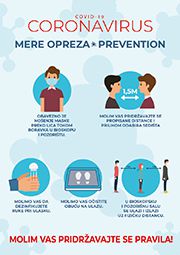News
In the middle of the 32nd International Festival of Children’s Theatres - Subotica
Back to...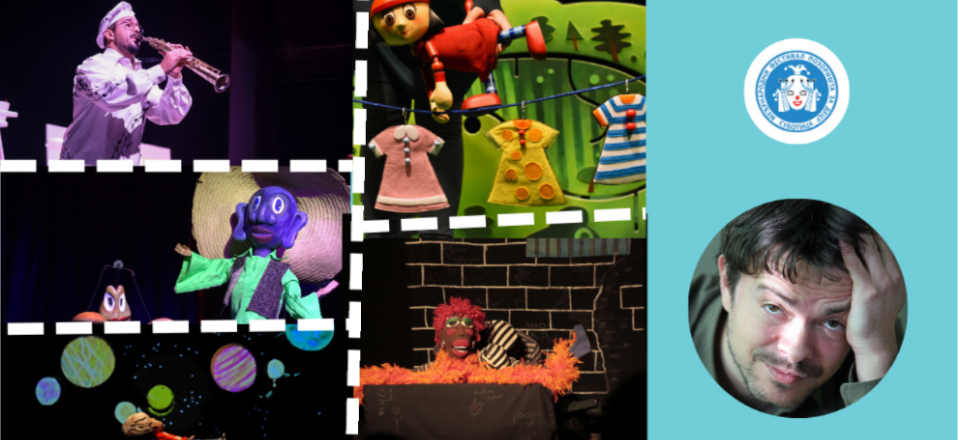
Pintamusica, a play by the Viu el teatre from Spain is one of those gentle plays for babies. It begins with a well-performed show by 3 artists who introduce themselves to the audience and receive their admiration. Communication is seemingly easily, established with a simple greeting: first with their voices, then with familiar hand gestures.
The stage is set up so that everything is white. It reminds of innocence and purity.
The white color has another function. It represents a painter's canvas. When one of the performers begins to blow through the reed of a clarinet (or is it an oboe?), creating tones with their fingers on the instrument’s keys, music begins to flow across the stage and onto the canvas (which is actually a screen). The audience - children especially - watches with a gasp as the tones create a picture.
The lines of the wind instrument are completed, so the hands of the other two performers are join in the drawing - on the canvas, at the piano and on the percussion instruments. The music continues its work and the dramaturgy is very elementary - the seasons, moods, lighting and colours change. An odd withered leaf is glued to the white costumes, further enlivening the action on stage. The intensity of the performance is heightened by the inner-question what will emerge as the final image.
This review hints on simplicity and beauty, but it should also reveal the full attention with which the audience watched the performance, without blinking or making unnecessary noises. Art can sometimes be hypnotic.
It is difficult to determine exactly why the beaten Goblin cries in the eponymous play by the Colombian Fundación Teatral Madretierra. It is also difficult to determine why even today - in an age of very simple and accessible software tools for text transcription and translation – the organizers of the International Festival of Children's Theatres - Subotica are unable to subtitle their plays. Especially so since the festival is international and some of its guests are accommodated to stay for the entire duration. Anyway, let us put our plot comprehension and deduction skills to the test, shall we?
The dictionary defines a goblin as a mythological creature that despises society, is prone to mischief and often malicious. Authors of fiction for children (and the adults) have widely celebrated goblins in their science-fiction cinema. South American culture is particularly known for cultivating ancestral myths, their cult of the dead and spirits, so we can assume that goblins would not fare well in the company of so many other spiritual creatures.
Employing Latin percussions and rhythms, the play (written by Edgar Hernán Moreno Rojas) brings out puppets of soccer players, ordinary people and animals - their spirits - so there is always something happening on stage. The plot is lively enough - the audience can be entertained just by the dynamics of puppet-play of different types and sizes alone. Also, a lot of the entertainment value was found in a scene in which a randomly selected audience member joins a wedding procession and is forced to kiss a horse-shaped bride. It is difficult to determine who eventually got the beating or whether the goblin was a large woman or a small man? For those fluent in Spanish, there certainly must be much more to this play.
A beauty of the International Festival of Children’s Theatres – Subotica is that we can always learn something new and improve. For example, the Pinocchio Puppet Theatre staged R. J. Palacio's famous novel The Miracle, directed by Emilija Mrdaković. The novel is more or less known because of the film which starred the famous actors Julia Roberts and Owen Wilson. However, this was the first time I had heard and seen something similar, so I found the play valuable and inviting to discussion. The story goes that - while out with her kids - the author (writing under the pen-name of R. J. Palacio) encountered a child with an unusual syndrome causing facial deformities and breathing difficulties. She was startled and did not know how to react which, in turn, stimulated her creativity to come up with the novel whose 10-year-old protagonist Agi - after being homeschooled – enrolls into a public school, thus experiencing the most difficult year of his life with peers, first love and friendship. This puts the whole family to the test, including his mother, father and sister.
Agi is called Ogi in the stage adaptation written by Teodora Marković. His face - as well as the faces of other children characters - is portrayed by puppets (designed by Oleg Katorgin). This is not the case for the adult characters which opens up possible interpretations. The house and the school on stage appear as projections that evocatively suggest furniture and enable dynamic changes in the environment (set design by Uroš Danilović). The mood - especially the internal states of the protagonist - is underlined by ambient electronic music (composer Aleksej Mrdaković). The actors playing adults control the puppets quite convincingly which - due to their size and lack of handles - proved to be challenging when performing smaller detailed body language movements. In short, the themes of growing up and the societal integration of such an unusual creature are given a very broad and complex treatment.
Naturally, the first thing that comes to mind is the character of Joseph Merrick, the Elephant Man from David Lynch’s eponymous film (recently adapted for stage by Kokan Mladenović at the Belgrade Drama Theatre). Of course, today we get a more humane approach than was the case in the 19th or even 20th century. However, some questions remain and it would be very important for educators, psychologists - and even playwrights and theatre experts - to consider and discuss them, as to why the play by the Pinocchio Theatre is unusually important. Here are a few notable points, but there are certainly more:
- When Ogi arrives at school on his first day, a boy immediately asks him what is wrong with his face. How should we approach people like Ogi?
- When Ogi cuts his hair because of bullying at school, his father says he never liked it. At that point, I heard a girl in the audience whisper that her father was just like that. The question is: how exactly should parents support their children?
- When the characters of Ogi's sister and her boyfriend kiss on stage, the audience is filled with the excitement of 10 year old boys and girls, the protagonist’s peers. This raises the topic of one of emotional and, even, sexual education.
- When Ogi's friend finally hits one of his rivals upon constant bullying, the audience is again filled with cheers of excitement. Is violence the only response we recognize as valid when a bully won't stop harassing us?
At all these points, I would stop the play and talk to the children about their experiences with these scenes. In this way, I can only encourage readers to return to them when the opportunity arises.
The connection between prisoners and puppeteers did not immediately occur to me. However, a few hours upon watching the performance of Caught Between the Puppets by the Mexican Demediado Teatro, I began to understand the humorous message of two actors in prison uniforms who pass their days bringing to life puppets found in distant corners of their cells. Of course, the metaphor of prison may not be the most appropriate for theatre, but just a few days prior at the 32nd International Festival of Children's Theatres - Subotica, we had the opportunity to see how Boxlife can also represent freedom. In the play by Lorena Kasper Torres, freedom is primarily music and movement, which is the reason each of the puppets is dedicated to one of the hit songs, such as Luz Casal's Un año de amor or Gloria Gaynor's I Will Survive. A play funny, charming and lively.
Little Red Riding Hood truly is a truly popular title on stages dedicated to children. As I recall, two performances of Little Red Riding Hood were put on the festival bill last year. Both had different starting points and developed different relationships between the familiar characters of the girl, her mother, grandmother, the wolf and the hunter. As a director, Saša Latinović chose to present the Youth Theatre’s Little Red Riding Hood with a new coat of paint in terms of stage and puppet design (Milica Grbić Komazec). One could say that the design is a refined style of Lego blocks which the actors provide with voice and movement in a very inspired manner (Ksenija Mitrović, Marija Todorović, Aleksa Ilić). Other innovations include an onstage map facing the audience, marking the position of Little Red Riding Hood and other characters on their way to granny's house. Standing out among other characters are a silly, short-sighted rabbit and a hedgehog who have deducted that the wolf is only pretending to be a dog. Obviously created for the youngest, pre-school age children, the play is captivating with its visuals and music (Danilo Mihnjević). The consequence of Little Red Riding Hood's disobedience remains the same: even though she set off on her own - basically running away from home - and even though she slightly strayed, she did not fall into the jaws of the evil (actually hungry) wolf, like her grandmother did. Good-natured, no problem. The character of Mom joined everybody after washing up, cleaning the house and preparing lunch - which may have prompted older audience members to reflect on what version of Little Red Riding Hood this is from the standpoint of gender stereotypes (the same could also be heard at the Research Forum) whose deconstruction remains imperative when it comes to popular female characters.
Back to...-
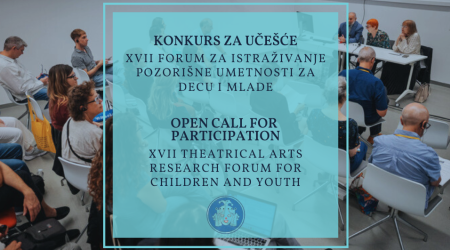 31 october 2025
31 october 2025Call for Proposals of Participants for 17th Theater Art Research Forum for Children and Youth
-
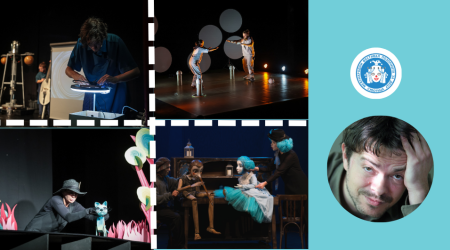 30 september 2025
30 september 2025Outstanding Finale оf the 32nd International Festival of Children’s Theatres Subotica
-
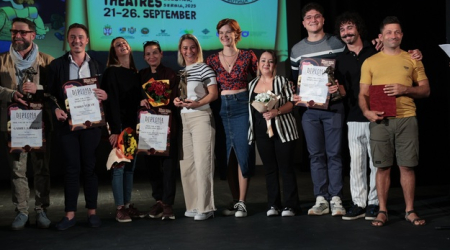 26 september 2025
26 september 2025Boxlife announced the best performance of the 32nd International Festival of Children's Theatres - Subotica
-
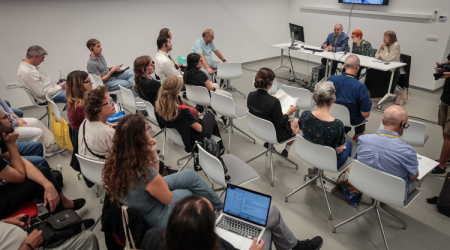 26 september 2025
26 september 2025The 16th Research Forum for Children and Youth Theatre Art concluded



